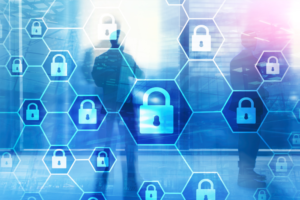Elevating Commercial Security: The Power of Security Cameras
The business security landscape has experienced a significant degree of turbulence in recent years. From reports suggesting almost 40% of UK-based businesses have been impacted by targeted cyber attacks, to equally worrying news that over 90% of surveyed operations leaders believe that physical security threats will increase in the near future.
For organisations to appropriately address these concerns, a new approach to business security must be considered. While traditional components like CCTV cameras, access control devices and alarms systems still represent the core of commercial security systems, modern variations of these tools are now far more versatile and intuitive than ever before.
To help business leaders improve and strengthen existing security systems, this post will explore how the power of modern security cameras can be used to elevate commercial security. Including key insights and practical use cases for businesses looking to develop intelligent commercial security systems.
AI-informed video analytics
One of the most notable improvements made to commercial cameras in recent years has been the development of AI-informed analytics software. While in the past, teams were required to divert limited resources towards the manual monitoring of CCTV feeds, now businesses can utilise automated threat detection systems to improve incident responses.
AI software systems are capable of autonomously detecting predetermined stimuli, including contraband items, unknown vehicles or even suspicious behaviours such as crowds forming in unusual locations. If a threat is identified, security teams can be notified immediately via a cloud-based management system, with staff able to access feeds from secure smartphones.
For example, specialised cameras can be installed to cover car parks and loading bays. With AI software programmed to send real-time alerts if registered vehicles are tampered with or if unknown vehicles are detected. Utilising these systems ensures businesses are protected at all times, while helping security staff make more efficient use of potentially limited resources.
Remote access monitoring
With smart surveillance camera networks connected to a cloud-based security management platform, businesses can benefit from remote monitoring functionality. Internet Protocol (IP) and Power over Ethernet (PoE) cameras with pan, tilt and zoom features can be adjusted freely using smartphone-based controls, offering a holistic view of installed security systems.
When combined with previously mentioned video analytics software, custom alerts can be programmed to notify both on-site and remote security admins of potential threats. Teams can then quickly access relevant security cameras, adjust viewing positions to monitor unfolding incidents in real-time. With findings sent to on-site teams to improve responses.
Different styles of remote access cameras can be installed in specific locations to improve visibility. For example, weatherproof long-range bullet cameras may be used to cover large outdoor spaces like car parks and building perimeters, while wide-angle dome models offer 360° coverage of indoor areas. Staff can move between feeds to assess unfolding incidents.
Additional integrations
Developing an interconnected network of smart security cameras linked via a cloud-based management platform opens the door to a wide range of additional integrations. By utilising sensors and actuators connected to the Internet of Things (IoT), stimuli recorded by on-site CCTV cameras can be used to control the operation of additional physical security devices.
For example, a combination of IoT motion sensors and video camera units can be used to trigger alarms and lock access control doors if movement is detected in high-risk areas. The reverse is also possible, with data collected by active IoT sensors used to flag surveillance footage, speeding up evidence collection and incident review processes to a notable degree.
Of course, the networked nature of these systems means that comprehensive cybersecurity protections must be considered. Businesses must ensure all communications are encrypted, managed access control policies are in operation and that a policy of zero trust is pursued. This will reduce the likelihood of bad actors gaining access to devices and confidential data.
Summary
With reports suggesting physical security attacks may be on the rise, modern businesses must reassess existing security systems. By utilising the power of advanced CCTV cameras, video analytics software and cloud-based management technologies, teams can improve threat detection processes and better protect sensitive assets from sophisticated criminals.







